The UCLA Brain Mapping Center is comprised of resources located in the core facility, the Ahmanson-Lovelace Brain Mapping Center, as well as additional resources housed in the Reed Neurological Research Center and the Laurie and Steven C. Gordon Neuroscience Research Building.
The UCLA Ahmanson-Lovelace Brain Mapping Center (ALBMC) was proposed in 1993 by its Founding Director, John C. Mazziotta, M.D., Ph.D. The center is now under the direction of Roger P. Woods, M.D.
The center was conceived as an integrated facility where investigators from throughout the campus and wider research community would have access to the full spectrum of brain imaging techniques. At the forefront of these research efforts would be a distinguished faculty whose unique areas of expertise would be brought together to refine our understanding of how the brain functions in normal and diseased states.
Ground was broken for the first phase of construction, the MRI laboratory, on June 7, 1995 and completed in February 1996 with the installation of a GE 3T Signa scanner. Construction on the remainder of the building was completed in August 1998. Included in this two-story portion of the building that fronts Charles E. Young Drive South are faculty and administrative offices, meeting and classrooms, and laboratory and work areas. Installed within this area are the RDS 111 Cyclotron for the production of radioisotopes, especially O-15 oxygen and a Siemens Positron Emission tomography scanner.
Other important early additions to the Center imaging facilities were the establishment in 1999 of the Transcranial Magnetic Stimulation (TMS) laboratory and the Electroencephalograpy (EEG) laboratory in 2003.
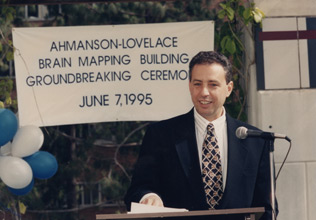

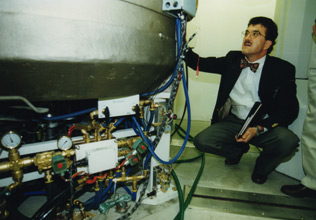
As MRI scanner technology evolved, the Center facilities kept pace. In 2003, the MRI laboratory was remodeled to accommodate two MRI scanners: a Siemens 3T Allegra which replaced the Signa scanner, and a Siemens 1.5T Sonata. Major changes to the network and data storage system and the data analysis laboratory were also implemented along with the introduction of a unique database that manages all MRI related operations such as project approval, scanning schedules, safety training and billing. A further upgrade to the 3T MRI facility occurred in 2008 with the replacement of the Allegra scanner by a Siemens 3T Trio. In 2014, the Trio was upgraded to a Siemens 3T Prisma Fit.
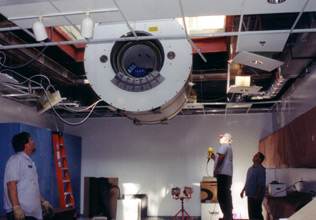


In 2013, the Brain Mapping Center merged with another affiliated campus laboratory located in the nearby Laurie and Steven C. Gordon Neuroscience Research Building, greatly expanding the Center’s computational resources for data storage and analysis.

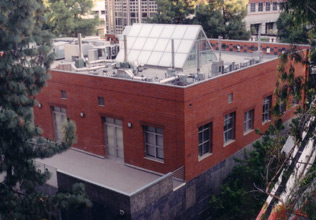
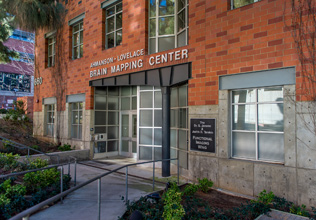
In April 2023, a new project commenced in order to site and install a Siemens Biograph 3T mMR (PET/MR Hybrid) scanner along with additional auxillary areas for both the Laurie and Steven C. Gordon Advanced Imaging mMR and MRI laboratories. These areas include an expanded radiopharmecutical laboratory, radiopharmaceutical uptake room, PET restroom, MRI changing room, MRI prep room, MRI restroom and a new MRI waiting room. The Siemens 1.5T Sonata and Bruker 7T scanners were removed during this renovation.



As part of the David Geffen School of Medicine at UCLA, the Brain Mapping Center delivers all of the advantages of being affiliated with one of the world’s most prestigious and advanced medical schools. The research conducted within the Center draws upon talents and enthusiasm ranging from newly enrolled students to the time-tested experience of the school’s knowledgeable and accomplished faculty and staff. The Center strives to provide an ideal environment for studying the human brain through equipment regularly updated to maintain state-of-the-art capabilities, staffing by experienced technicians dedicated to the Center’s research mission, and a talented faculty with a breadth of expertise that ranges from the clinic to the physics of instrumentation to computer science and algorithm development. Moving forward, the UCLA Brain Mapping Center will continue to be a valuable resource for research and collaboration among neuroscientists at UCLA and around the world.